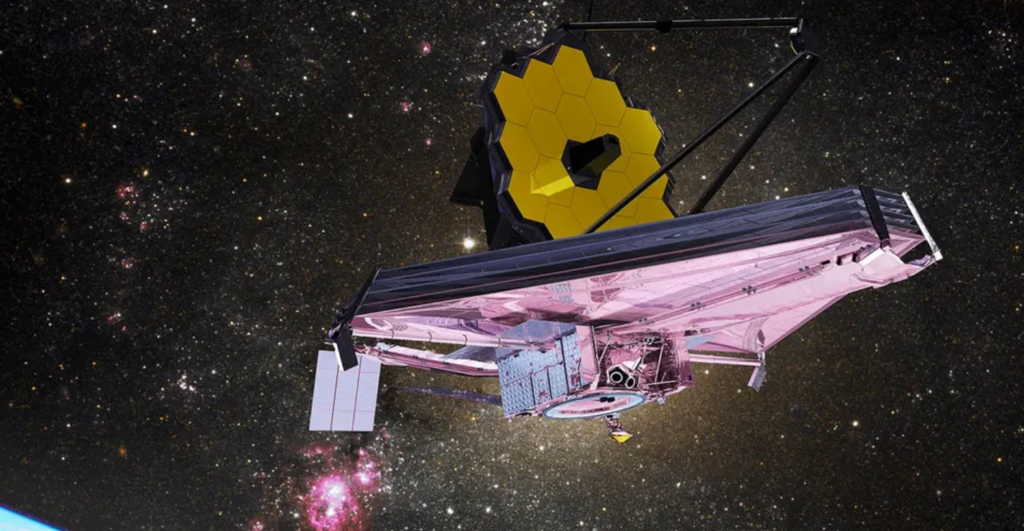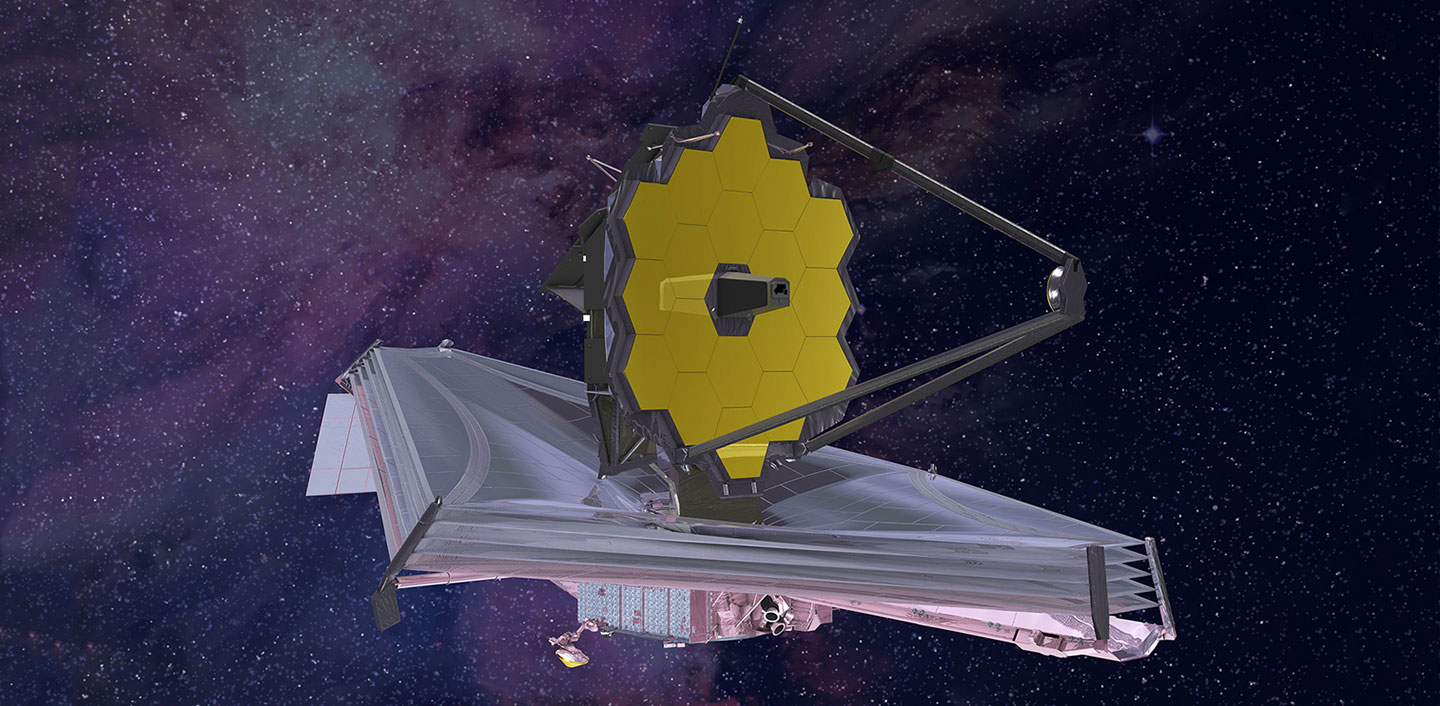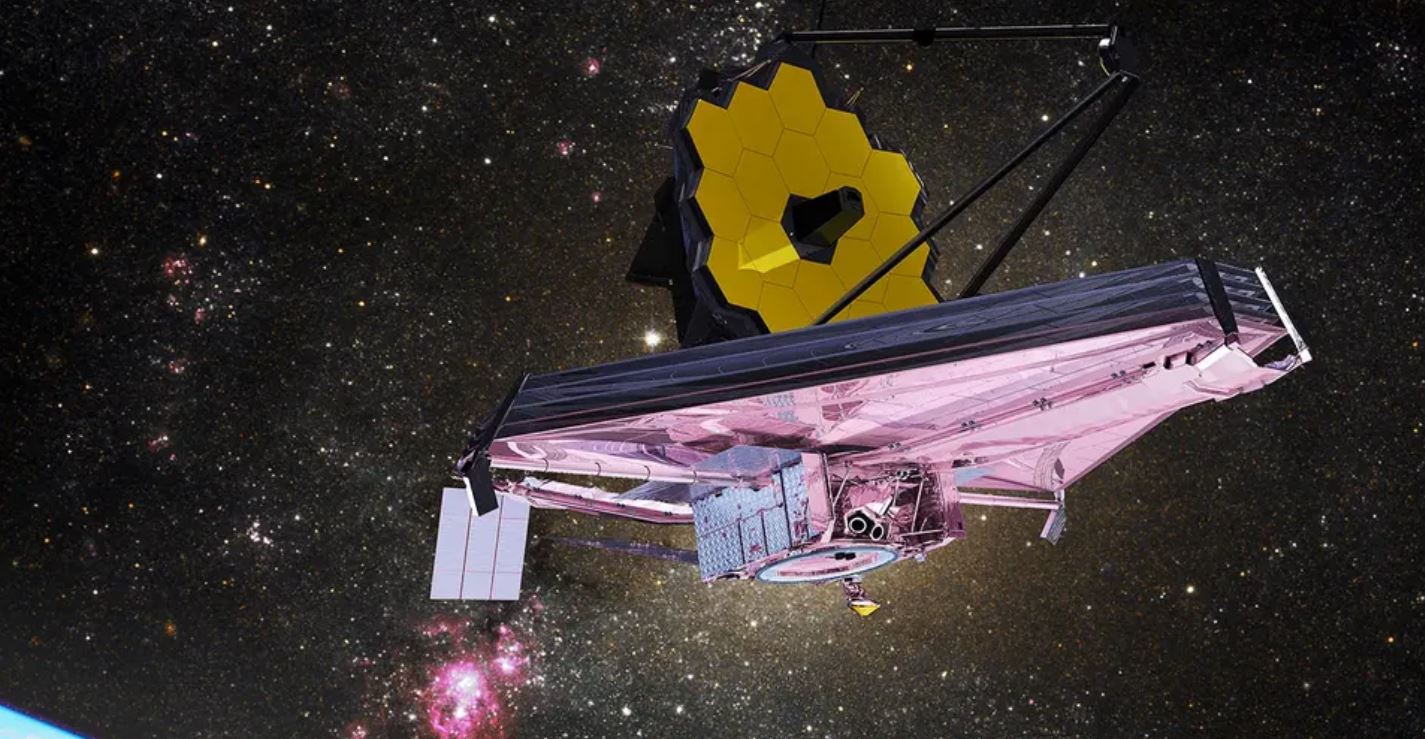
The James Webb Space Telescope Is Almost Completely Ready
Over the past few months, the James Webb Space Telescope has been very busy. After hundreds of initial deployments, it continued on the long journey to L2. Now in late March, the telescope has made significant alignment progress of its primary mirror and is getting closer and closer to being 100 percent operational. However, the telescope still has some important tasks prior to that milestone.
As of right now, Webb is proceeding through the remaining alignment steps before final science instrument preparations. This includes the alignment of three core instruments used in Webb’s general operations. All of which help transform the telescope into the most powerful ever sent into space. In this phase, NASA uses an algorithm for exact calculations and corrections to each instrument and more.
These extremely small changes make an immense difference in the next generation telescope’s future images. However, thanks to Webb’s quick and detailed progress, we can expect to see some of its first finely tuned images from a complete Webb in only a few months. Here I will go more in-depth on the telescope’s current operations, upcoming final steps, and when it will start consistently releasing fascinating images of the Universe.
Webb’s Most Recent Progress

About two weeks ago we saw Webb complete a major alignment milestone. Along with the completion of this important step was a unique image captured by the JWST that was released. The purpose of this image was to focus on the bright star at the center for alignment evaluation. However, Webb’s optics and NIRCam are so sensitive that the galaxies and stars seen in the background show up. At this stage of Webb’s mirror alignment, known as “fine phasing,” each of the primary mirror segments have been adjusted to produce one unified image of the same star using only the NIRCam instrument. This image not only marked a major accomplishment but also was extremely encouraging as it displayed and captured much more light than anticipated. During this Fine Phasing stage, every optical parameter that has been checked and tested is performing at, or above, expectations. NASA also found no critical issues and no measurable contamination or blockages to Webb’s optical path. They noted the observatory is able to successfully gather light from distant objects and deliver it to its instruments without issue. This brings us to today in late March only a few weeks after this last milestone.
Current Progress

With the fine phasing stage of the telescope’s alignment complete, NASA has now fully aligned Webb’s primary imager, the Near-Infrared Camera, to the observatory’s mirrors. “We have fully aligned and focused the telescope on a star, and the performance is beating specifications. We are excited about what this means for science,” said deputy optical telescope element manager for Webb at NASA Goddard. “We now know we have built the right telescope.” As of right now, NASA is proceeding through the remaining alignment steps before final science instrument preparations. For the last few weeks and the next month, the agency will be working on these exact instruments. Specifically, the team will further align the telescope to include the Near-Infrared Spectrograph, Mid-Infrared Instrument, and Near InfraRed Imager and Slitless Spectrograph. In this phase of the process, an algorithm will evaluate the performance of each instrument and then calculate the final corrections needed to achieve a well-aligned telescope across all science instruments. Following this, Webb’s final alignment step will begin, and the team will adjust any small, residual positioning errors in the mirror segments.
Each of these three instruments that NASA is currently aligning are key to the future operations and success of Webb. It all starts with the Near-Infrared Spectrograph, or NIRSPEC. This instrument will operate over a wavelength range of 0.6 to 5 microns. A spectrograph (also sometimes called a spectrometer) is used to disperse light from an object into a spectrum. Analyzing the spectrum of an object can tell us about its physical properties, including temperature, mass, and chemical composition. The atoms and molecules in the object actually imprint lines on its spectrum that uniquely fingerprint each chemical element present and can reveal a wealth of information about physical conditions in the object. Spectroscopy and spectrometry (the sciences of interpreting these lines) are among the sharpest tools in the shed for exploring the cosmos. NASA points out that many of the objects that Webb will study, such as the first galaxies to form after the Big Bang, are so faint, that Webb’s giant mirror must stare at them for hundreds of hours in order to collect enough light to form a spectrum. In order to study thousands of galaxies during its 5 year mission, the NIRSpec is designed to observe 100 objects simultaneously. In addition, it means this instrument will be the first spectrograph in space that has this remarkable multi-object capability. To make it possible, Goddard scientists and engineers had to invent a new technology microshutter system to control how light enters the NIRSpec. This is just one of many inventions made specifically for the James Webb Space Telescope. One of the unique aspects of NIRSpec has to do with technical details. This instrument enables scientists to obtain simultaneous spectra of more than 100 objects in a 9-square-arcminute field of view. It provides medium-resolution spectroscopy over a wavelength range of 1 to 5 micrometers and lower-resolution spectroscopy from 0.6 to 5 micrometers. The NIRSpec employs a micro-electromechanical system “microshutter array” for aperture control, and it has two detector arrays. The magic of Webb is combining each of these detailed instruments that have specific advantages. Together, they are expected to provide some of the most high-quality space images ever produced.
The next instrument NASA is currently aligning on the JWST is the Mid-Infrared Instrument, or MIRI. This instrument has both a camera and a spectrograph that sees light in the mid-infrared region of the electromagnetic spectrum, with wavelengths that are longer than our eyes see. MIRI covers the wavelength range of 5 to 28 microns. As I mentioned prior, these instruments are so exact that right now NASA is using algorithms to find and correct minuscule numbers. In addition, its sensitive detectors will allow it to see the redshifted light of distant galaxies, newly forming stars, and faintly visible comets as well as objects in the Kuiper Belt. MIRI’s camera will provide wide-field, broadband imaging that will continue the breathtaking astrophotography that has made Hubble so universally admired. The spectrograph will enable medium-resolution spectroscopy, providing new physical details of the distant objects it will observe. Just yesterday NASA tweeted about MIRI saying, “To chill to its operating temperature of less than -447 Fahrenheit or -266 Celsius, Webb’s MIRI instrument uses a special refrigerator. But it also requires heaters to control its cooldown & prevent ice from forming in space.” Lastly, MIRI has three Arsenic-doped Silicon detector arrays. The camera module provides wide-field broadband imagery, and the spectrograph module provides medium-resolution spectroscopy over a smaller field of view compared to the imager. All of which work together to help Webb perform day to day operations.
The last vital instrument on Webb that is currently being aligned is the Fine Guidance Sensor/Near-Infrared Imager and Slitless Spectrograph, or FGS/NIRISS. Specifically, the Fine Guidance Sensor allows Webb to point precisely, so that it can obtain high-quality images. On the other hand, the Near-Infrared Imager and Slitless Spectrograph part of the instrument will be used to investigate a long list of important science objectives. This includes first light detection, exoplanet detection and characterization, and exoplanet transit spectroscopy. The combined instrument has a wavelength range of 0.8 to 5.0 microns, and is a specialized instrument with three main modes, each of which addresses a separate wavelength range. FGS is a “guider,” which helps point the telescope. As we speak NASA and the James Webb Space Telescope are working to align each of these three vital instruments. This process has been going on for about two weeks now and is expected to be done in around 1 month from now. After this specific process is done, there are only a few final steps before Webb is complete. NASA points out that “The team is on track to conclude all aspects of Optical Telescope Element alignment by early May, if not sooner, before moving on to approximately two months of science instrument preparations. Webb’s first full-resolution imagery and science data will be released in the summer.”
Conclusion
For months now the James Webb Space Telescope has been completing different deployments, achievements, and more. After decades of work and billions of dollars, it looks as if it could all be worth it. After reaching an alignment milestone about two weeks ago, the next-generation telescope is now aligning three separate vital instruments. This process is expected to take around 1 month followed by a few finishing steps. NASA expects Webb to be fully completed only a few months from now in Summer. We will have to wait and see how it progresses and the impact it has on the space industry.
